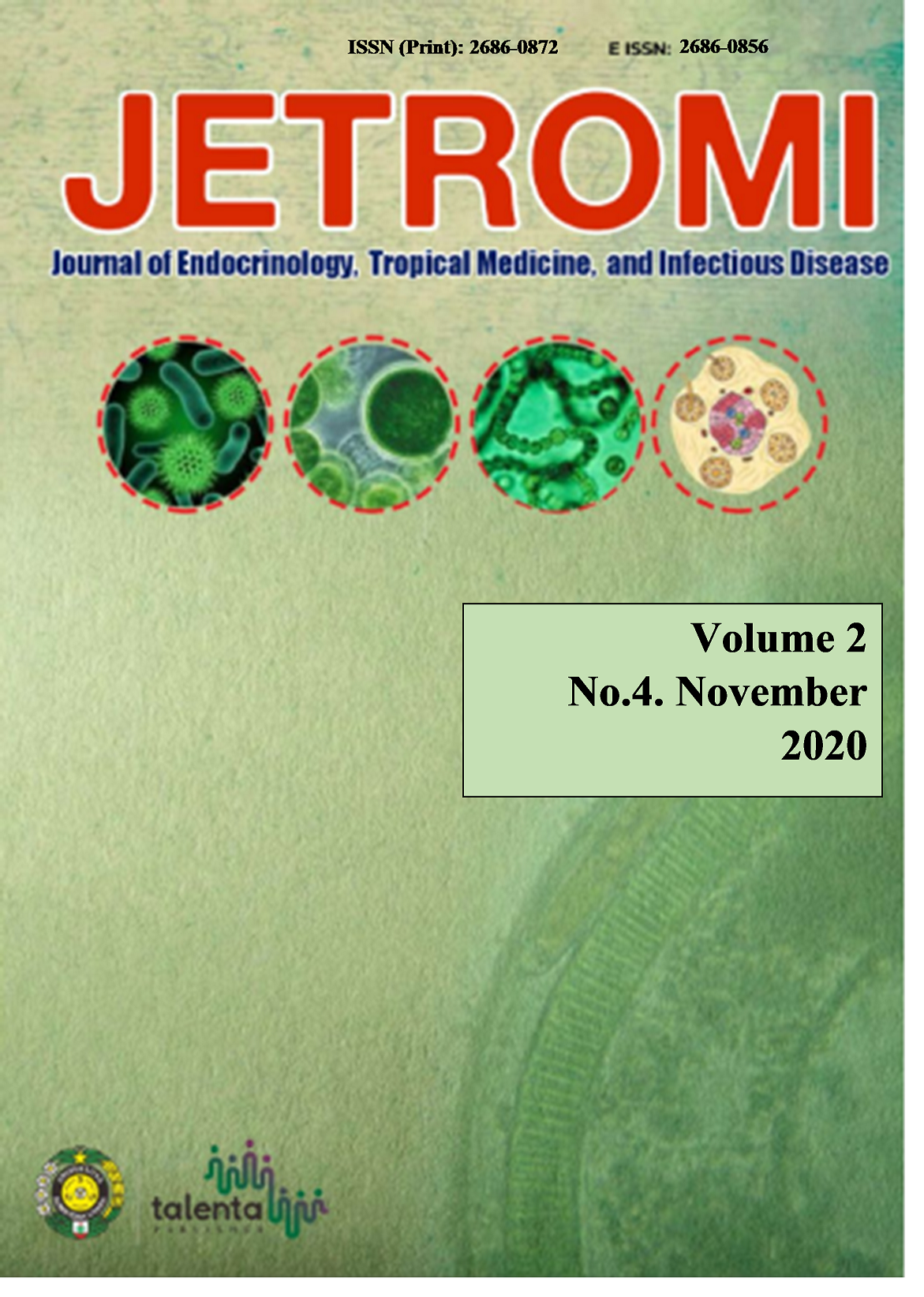The Relationship Between Lipoprotein (A) And Lipid Profile In Patients Treated With Bay Leaf Extract [Syzygium Polyanthum (Wight) Walp] In Patients Dyslipidemia
DOI:
https://doi.org/10.32734/jetromi.v2i4.4780Keywords:
Lp(a), lipid Profile, Dyslipidemia., Syzygium Polyanthum (Wight) WalpAbstract
Background: Increased Lp(a) accelerates atherosclerosis by means of cholesterol deposits in tunica. The purpose of the study was to assess the relationship of decreased Lp(a) with lipid profile in patients with dyslipidemia given bay leaf extract [syzygium polyanthum (Wight) Walp] treatment. Method: Thirty subjects were divided into 2 groups: group I received salam leaf extract therapy 2 x 200 mg and group II received salam leaf extract therapy 2 x 300 mg per day capsules for 30 days randomly selected and double blind. Examination of Lp(a), total cholesterol, LDL-C, HDL-C and TG before and after research. The manufacture of bay leaf extract is done by maseration, the extraction process using ethanol 70%, then the extract is inserted in the capsule. Result: In groups I and II there were significant differences in variable Lp(a) and lipid profiles after treatment except HDL-C. There is a significant correlation between Lp(a) and LDL at salam leaf extract therapy doses of 2x200 mg per day. Conclusion: Decrease in Lp(a) is significantly correlated with decreased LDL-C. Salam leaf extract therapy can predict decreased cardiovascular risk in patients with dyslipidemia.
Downloads
Downloads
Published
Issue
Section
License
Copyright (c) 2020 Journal of Endocrinology, Tropical Medicine, and Infectiouse Disease (JETROMI)

This work is licensed under a Creative Commons Attribution-NonCommercial-ShareAlike 4.0 International License.
The Authors submitting a manuscript do so on the understanding that if accepted for publication, copyright of the article shall be assigned to Journal of Endocrinology, Tropical Medicine and Infectious Diseases (JETROMI).
Copyright encompasses exclusive rights to reproduce and deliver the article in all form and media. The reproduction of any part of this journal, its storage in databases and its transmission by any form or media, will be allowed only with a written permission from Journal of Endocrinology, Tropical Medicine and Infectious Diseases (JETROMI).








